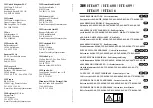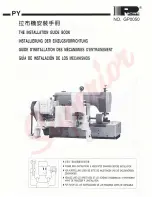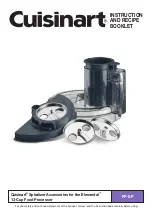
25
10.4.3 Equalization Charge
CAUTION
FIRE AND BURN HAZARD
• Do not perform an equalization charge on the AES LiFePO
4
battery.
Failure to follow these instructions may result in minor to moderate injury.
Do not equalize charge the AES LiFePO
4
battery.
Equalization charging is intended
only for lead-acid batteries. An equalization charge is a purposeful overcharge that
targets a voltage above the standard charge voltage to remove sulphate crystals
that form on lead-acid plates over time.
10.4.4 Float Charge
Float phase.
Float charge, the third phase of charging, is optional. During this stage,
the battery is maintained at 100% SOC for extended periods, counteracting any self-
discharge or parasitic loads.
•
Not necessary.
Float charging is not required.
Refer to
Table 3-1,
AES LiFePO
4
Electrical Specifications
for float parameters if
needed.
11. ROUTINE INSPECTION
Periodically inspect the battery.
1. Ensure that all DC cables are secure and fasteners are tight.
2. Ensure all Networking cables and connectors are secure and tight.
3. Ensure that the installation location is clean and free from debris.
4. Inspect for cracks in the battery case.
5. Replace any damaged batteries.
6. Replace any damaged cables.
The battery is ready for use after the inspection is complete.
12. STORAGE
Leaving the battery connected to a trickle load or power electronics will cause the
battery to discharge during storage. Without any load, the battery will self-discharge
by approximately 3% per month while in storage. After storage, charge the battery
to 100% SOC and perform at least one full discharge and charge cycle before
returning the battery to service.
1.
Store at 95% SOC or more.
To store the battery for up to 6 months, store the
battery at 95% SOC or more. It must remain disconnected from all loads and
power electronics during storage.
2.
Switch OFF the battery.
Set the battery to OFF.
3.
Check SOC every 6 months.
Recharge the battery to above 95% SOC at least
every 6 months.
Summary of Contents for Discover 42-48-6650
Page 27: ...27 NOTES...
Page 28: ...28...




































